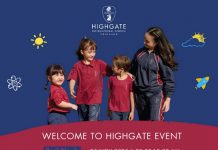One of humankind’s greatest accomplishments was to successfully land men on the moon and then return them safely to Earth.
As part of its ongoing commitment to ‘Education Outside The Classroom’, Garden International School (GIS) took 55 students from the Year 9 and IB cohorts, as well as five staff members, to the “NASA: A human adventure” exhibition in Bangkok. The reason for the trip was simple: not only is Gravity and Space a Year 9 science topic, and Astrophysics an option topic studied by IB Diploma Physics students, but this was a once in a lifetime educational opportunity.
The entrance to the exhibition was a simulation of the gantry elevator compartment used in a typical space rocket launch. A video showed the famous “10, 9, 8, 7…” countdown of a NASA Apollo mission after which the elevator door rumbled open and students were pitched into their own mission to explore and interact with the many exhibits on display.
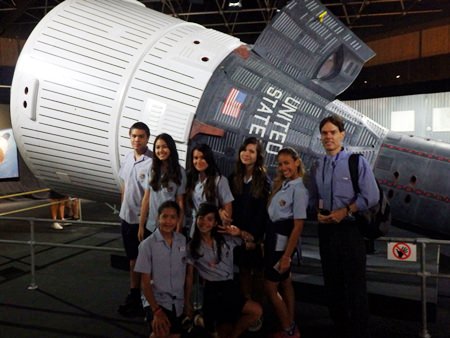 Students got to see what NASA rockets look like close up.
Students got to see what NASA rockets look like close up.
After making their way past walls bedecked with the giants of international space travel, such as Yuri Gagarin and Alan Shepherd, rocket science was the order of the day for the excited students – the “Pioneers” section was behind a large glass façade covered in complex physics equations related to rocketry and Newton’s laws of motion.
A scaled-down replica of the famous Saturn V rocket which reached incredible velocities of up to 2,000 metres per second in the Apollo 11 mission was within touching distance. The lunar lander and moon rover were also on display along with the Russian lunar survey rover Lunokhod.
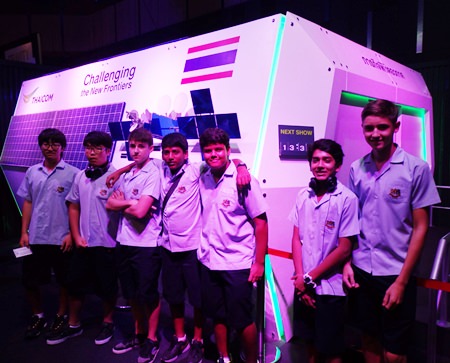 Year 9 students were fascinated by their NASA trip.
Year 9 students were fascinated by their NASA trip.
The “Endurance” section of the NASA exhibition followed with examples of spacesuits worn by astronauts and cosmonauts, as well as the liquid food and even toothpaste consumed on the many missions into space.
“Innovation” displayed the stunning cone-shaped Apollo command module with its amazing interior and exterior. The parachute it used to make a successful Pacific ocean splashdown was proudly hanging above it – and the gargantuan space shuttle Atlantis was right alongside.
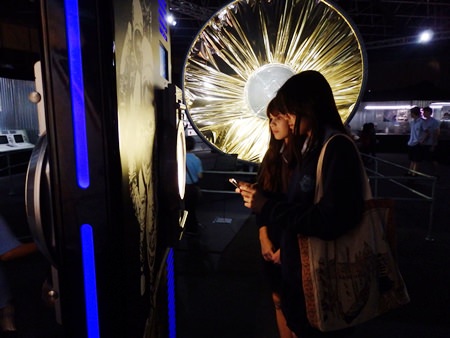 GIS students did their own research while at the NASA exhibition.
GIS students did their own research while at the NASA exhibition.
Students could experience the punishing forces exerted on astronauts during their voyage to an orbit around the moon with a G-force simulator in the final section of the exhibition. Several GIS students and teachers eagerly stepped up to the capsule and were soon rotating at a speed which produced a centripetal acceleration equivalent to 1 G. Photos in the zero-gravity room and in replica spacesuits followed and it was soon time for a well-earned lunch break and then the long journey home.
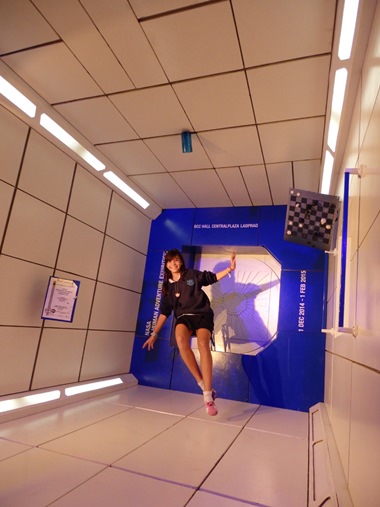 A Year 9 student experiences weightlessness.
A Year 9 student experiences weightlessness.
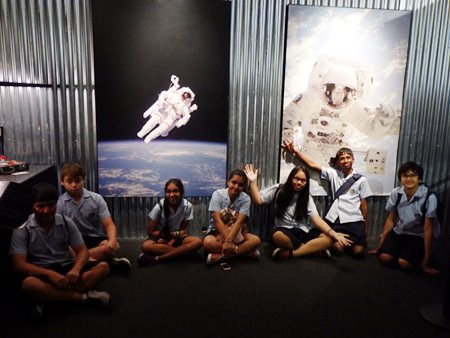 An out-of-this-world trip for GIS students!
An out-of-this-world trip for GIS students!


